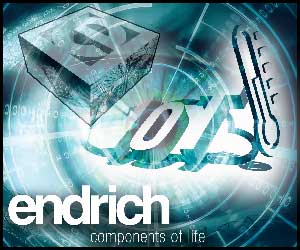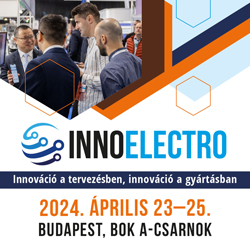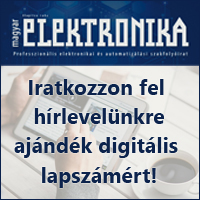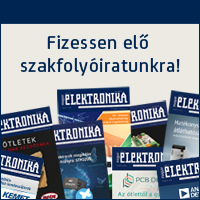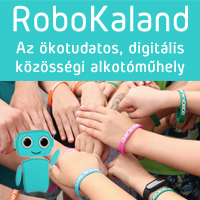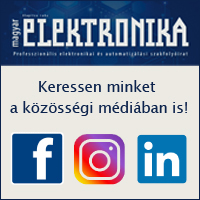Displays in IoT applications
Megjelent: 2022. április 28.
 Even if we are not always aware of it, today were are surrounded by devices and sensors that communicate over the Internet. Many of these are equipped with displays, which provide users with on-site information and also allow for easier operation.
Even if we are not always aware of it, today were are surrounded by devices and sensors that communicate over the Internet. Many of these are equipped with displays, which provide users with on-site information and also allow for easier operation.
CODICO has been dealing with the topic of IoT from the perspective of wireless transmission for quite some time, so it's more than natural to now also look at the displays involved.

©AdobeStock/Gorodenkoff
What is IoT?
IoT stands for Internet of Things, but what do we actually mean by that? IoT is a system consisting of computers, devices, sensors, machines, and even humans and animals connected with each other – wirelessly or via cable –, each having a unique identifier, a so-called UID. IoT devices have the ability to collect, process, and transmit data without human interaction. Some examples are: implanted heart monitors that record and send parameters; biochip transponders in cattle, monitoring and transmitting their feeding behaviour and milk production, or crash sensors in cars that automatically alert first responders in case of an accident. As the examples show, IoT devices can be found in all sectors – from manufacturing and transport to medicine, from agriculture and smart homes to wearables.
Now let's take a look at the displays used in these IoT devices. We will be using case examples to show which technologies are used and where.

©AdobeStock/zapp2photo
OLED displays
Let's stay with the wearables. This market has seen a dramatic growth: a total of 105 million devices were sold worldwide in the 1st quarter of 2021, which corresponds to a 34.4% increase over the previous year. Demand for these devices also grew because of the COVID pandemic. The crisis significantly increased the need for such devices to monitor patients in home settings. The best-known examples in this area are definitely fitness trackers. OLED displays are the best choice here, and these devices use almost exclusively this technology. The advantages are self-evident: OLEDs are thin because they are self-illuminated and do not require a backlight, they have a high contrast, can be easily read from all angles, and can operate in a wide temperature range. Another advantage is that the organic materials they are made of can be easily attached to a plastic substrate. This also makes flexible displays possible. Our partner WISECHIP manufactures such flexible OLED displays. They can be easily integrated in a wristband (bending radius of minimum 40mm), and they can also be attached to curved surfaces for a variety of other applications. In addition, they also come in round shapes, such as those found in smartwatches. Their power consumption is well below that of TFT displays. Despite their energy efficiency, many manufacturers prefer to switch off the display after a certain time in battery operation to increase battery life. Though the role of displaying information is important, the possibility of interaction is also of essence. This is why touchscreens have also become established in small OLED displays, because they allow the user to interact with the device.

©AdobeStock/MyriamB
TFT LC displays
IoT, however, is not only limited to small, portable, or battery-powered devices. The very first attempt was the famous refrigerator with integrated TFT LCD screen, which could be used to download recipes from the Internet. In the meantime, several versions of it are available. Washing machines and other household appliances, however, are increasingly interconnected, either to inform the user about the end of a washing programme, or to start it when sufficient power from the home's own photovoltaic system is available. Let's take a (professional) coffee machine as an example. Fitted with a large colour display that can be used to select the type of coffee, such a machine gathers all parameters like the amount of coffee consumed, the number of grinding cycles, etc., and contacts the service technician when a predetermined value is reached. When not in use, the display also doubles as a billboard, showing advertising video clips down-loaded over the Internet. Heating installations also communicate with temperature sensors and react accordingly, or they can be activated and adjusted from a distance via smartphone. A display in the heating installation itself is also the current state of the art.
Most of these systems use mid-sized TFT displays, which require a constant power supply because of their backlight. TFT displays offer a good colour quality, are easy to read, and have a good contrast and response times. Our manufacturers also offer small TFT sizes beginning at 0.96", which are predestined for IoT applications. Due to their small size, their power consumption for the backlight is lower, also making them interesting for battery-powered applications. More-over, all these displays can be fitted with a touchscreen.

©AdobeStock/Insp.Clouseau
EPD (Electro-Phoretic Displays)
Some IoT applications rely on battery operation, so energy efficiency plays an essential role here. Bistable displays, like EPDs, are thus a suitable option. They only need power to change the screen content, and continue to display the information when switched off. Their disadvantage is that (depending on the resolution) it may take considerable time to change the content. Therefore, such displays are more suitable for static contents. Their main area of application are electronic price tags in supermarkets. By using electronic information channels, companies can automate the management of such content. Prices and text can be changed any time – a click in the central content management system will suffice. Other applications for these displays are door signs for conference rooms, timetables, labels for telephones, temperature sensors, etc. That is, wherever little power is available and content rarely changes. EPDs offer an excellent contrast, they are well readable from all angles, and only need energy to change their content. Their disadvantage is that the temperature range is currently limited, not allowing operation below 0 °C or -10 °C. But this technology is under constant development. Moreover, it is possible to carry out a partial update of the screen via software. Therefore, small parts of the screen can be changed quickly. Furthermore, manufacturers are currently working on expanding the temperature range and adding colour. So we can expect quite a few advancements in the future.
The applications described above are just a fraction of what is possible in the Internet of Things when it comes to the displays used. Of course, the IoT is an ever-growing sector that offers a lot of room for experimentation. Manufacturers are constantly looking for more energy-efficient display options that offer the best possible user interface.
At CODICO, we provide support to numerous customers for such projects and have already amassed a wealth of expertise. We will be happy to discuss a project with you so we can work out a solution together.
Balogh Gergely
CODICO GmbH
Field Sales Engineer
1122 Budapest, Hajnóczy József u. 11.
Mobil: +36 30 867 0687
E-mail: Ez az e-mail-cím a szpemrobotok elleni védelem alatt áll. Megtekintéséhez engedélyeznie kell a JavaScript használatát.




